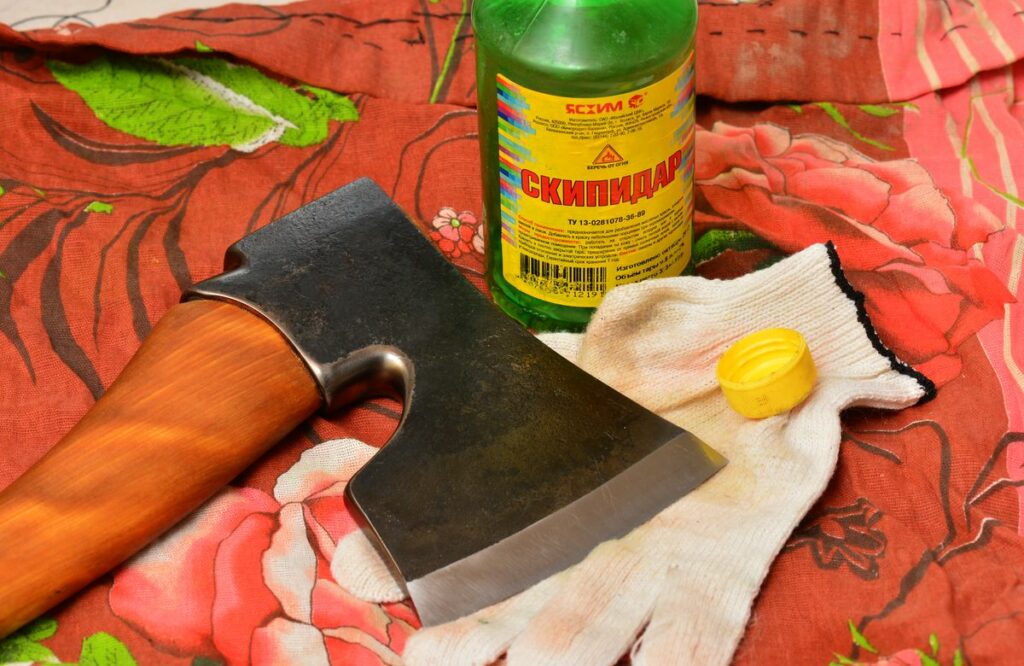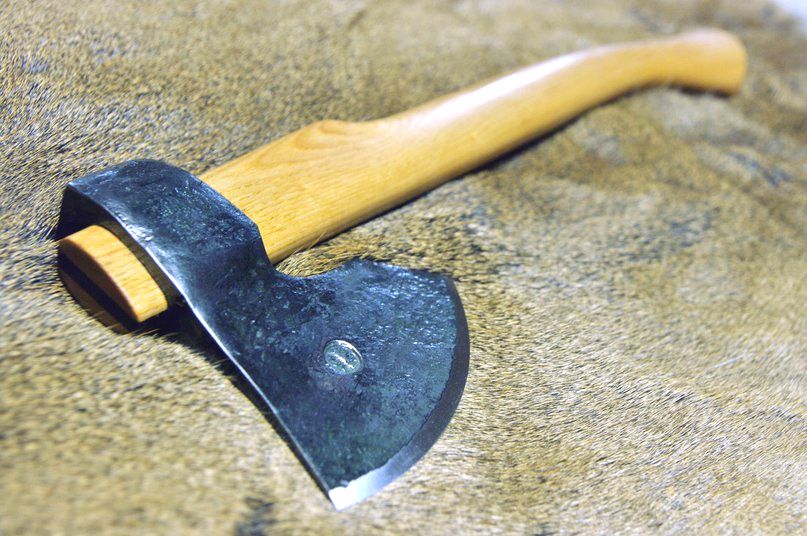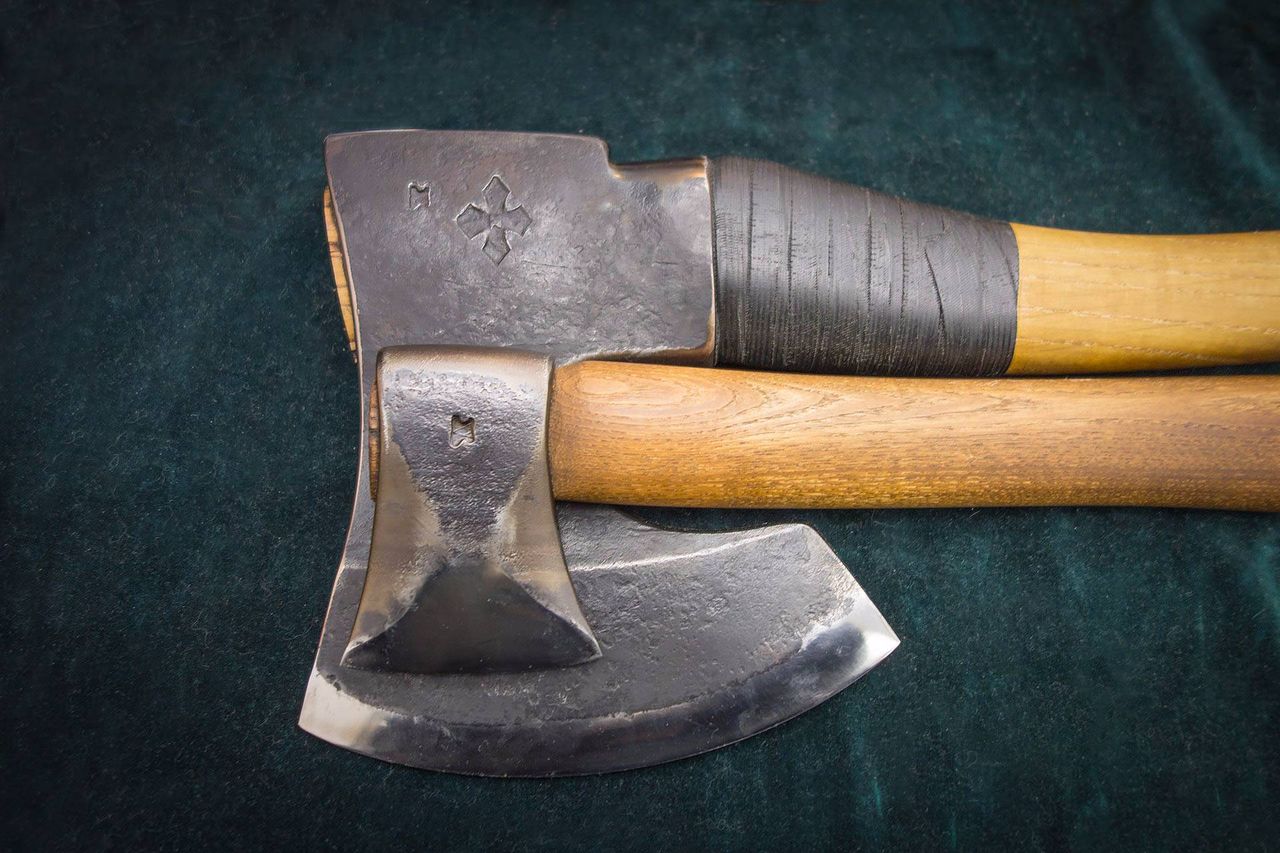How to treat an ax so that the metal does not rust
The metal head of the ax with the blade is actively susceptible to corrosion. It is enough to leave it in the grass after chopping wood; in the morning the blade will be covered with red stains and become dull. To prevent this from happening, the metal has to be blued. This is a procedure that helps prevent rust from forming on the instrument.
The content of the article
How to bury an ax at home?
Rust appears on metal not only from exposure to moisture, but also when exposed to air. There are many reasons for this:
- metal becomes covered with red spots at high humidity (from 60%);
- gases in the atmosphere accelerate the process of destruction;
- active and passive particles in the form of solid inclusions increase the rate of rusting;
- a decrease in temperature leads to evaporation of moisture, which promotes rapid corrosion;
- steel has thermodynamic instability.
How will blueing an ax help?
Experts note that steel products must be blued. The process helps protect products from corrosion. The surface is treated with oxidation and then with oil.
It ensures the absence of rust stains if the ax is properly cared for.
The thickness of the coating layer ranges from 1 to 10 microns. The higher it is, the better the corrosion protection. The procedure is carried out at low temperatures. In hot weather conditions, only an alkaline solution is used, as it is more gentle.

Preparing for bluing
The operation is carried out outdoors or in a well-ventilated workshop specially prepared for working with chemicals. Be sure to purchase protective clothing, strong gloves and a mask that will protect your skin and respiratory organs from exposure to harmful substances.
It is strictly forbidden to carry out bluing in residential premises.
Chemical components are stored in special containers that are not subject to destruction. Protective clothing and a mask will help avoid burns to the mucous membranes.
Metal processing methods
There are three main methods: alkaline, acid and thermal. Each of them has its own advantages. At the same time, not only axes are processed in this way, but also weapons, as well as other metal objects.
Alkaline bluing is based on the ability of the material to oxidize. This is a popular method that will be successful if you strictly follow the instructions. The procedure is carried out in a well-ventilated room. Temperature ranges from 135 to 150 degrees.
Step by step guide:
- Clean and degrease the ax head.
- Pour 100 ml of water into a porcelain container.
- Add 30 g of sodium nitrate and 100 g of technical soda.
- Mix the composition well and heat to a temperature of 150 degrees.
- The device is immersed in the resulting liquid for half an hour.
- Wash in distilled water.
- Air dry.
- Lubricate with machine oil.
After processing, the ax head is covered with a dense black film with a bluish tint. If more powerful protection is required, increase the amount of alkali in the solution.
Acid bluing involves a similar treatment. First, degrease the surface and dry thoroughly.Then add 2 g of tartaric and tannic acid to a liter of clean water, mix and heat to 150 degrees.
Place the ax handle in the solution for 17 minutes, then remove it and rinse with clean water. After this, immerse it in machine oil for an hour. Finally, wipe with a rag and dry in the open air.

The oldest and simplest method is thermal bluing of metal. The result is achieved through heating. The color after treatment directly depends on the temperature:
- 220–229 – covered with a pale yellow coating.
- 230–255 – yellow-golden or yellow-red.
- 256–280 – lilac or purple.
- 281–295 – blue.
- 296–320 – dark blue.
To work, you will need a gas hair dryer, pliers, rags, a bath for car oil and half a liter of liquid. You will also need a dry cloth. Using a hairdryer, heat the part to a certain temperature, then lower it into oil and leave for several minutes. After taking it out, blot it with a napkin and dry it.
The procedure must be repeated three times.
Recently, bluing has been used as a decorative finish, since there are special anti-corrosion solutions that protect the metal from destruction. When processing it yourself at home, follow the advice of professionals and follow safety precautions.





